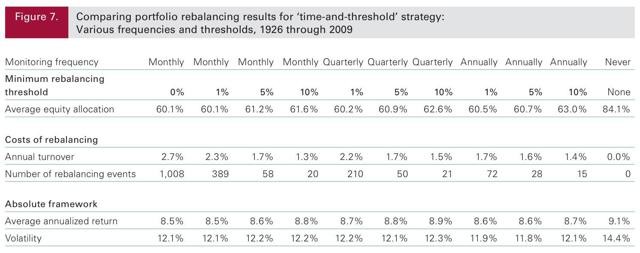When to rebalance your portfolio
Post on: 15 Май, 2015 No Comment

Company Retirement Plan
But over time, assets grow at varying rates. As one category leaps beyond your targeted percentage and another shrinks to a lower level than you desire, it’s time to consider rebalancing your portfolio .
Dangers of chasing the market
An up or down swing in the stock market is not one of those times, says Stuart Ritter, vice president and Certified Financial Planner with T. Rowe Price Investment Services in Baltimore. Ritter maintains your asset allocation should always reflect your goal’s time horizon, or how much time you have before you want to retire.
Let’s say I’m in my early 50s, he says. I should have about 80 percent in diversified equities and 20 percent in diversified fixed-income. That’s my target. And that target is based on my goal’s time horizon. It’s not based on what the stock market did in the last three weeks. It’s not based on what people are prognosticating is going to happen in the next three quarters.
Checking your portfolio for balance
Colleen Jaconetti, an investment analyst with the Vanguard Investment Strategy Group in Valley Forge, Pa. says investors should review their portfolios once or twice per year. Maybe select an anniversary — the first of the year, tax day, their birthday — and rebalance when the portfolio deviates from their target by more than 5 percentage points, she says.
On the other hand, Steve Raymond, a financial planner at Navion Financial Advisors in Gold River, Calif. recommends checking on the status of your asset allocation at least monthly, paying attention to how closely it matches your target rates. Ritter falls in between, advocating a quarterly review.
Rebalancing when the allocation is off

Although he advises frequent portfolio checkups, Raymond says you will typically need to rebalance only once or twice per year.
For Jaconetti, how often to rebalance depends a lot on how much of a deviation you are comfortable with and how much it will cost you to tweak your portfolio to get it back in line with your original target.
If it’s a tax-deferred plan, such as a 401(k), they would not have to pay any taxes as a result of making changes, Jaconetti says. The only fees an investor would have to think about would be transaction costs for processing the trade.
Possible transaction costs include sales charges, exchange fees and back-end loads. Additional costs might include fees paid to an adviser for help with evaluating your next move and carrying out the transaction.














